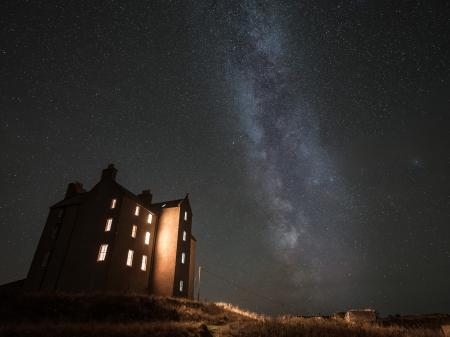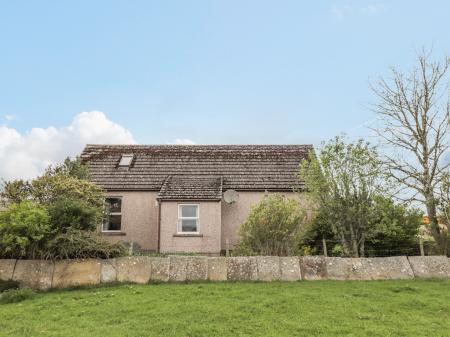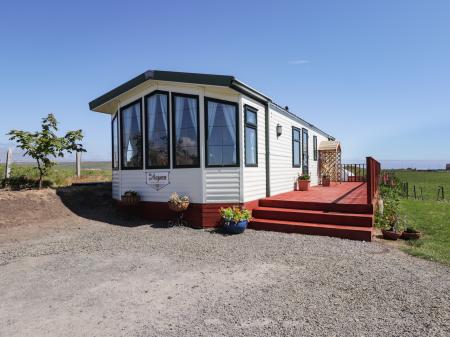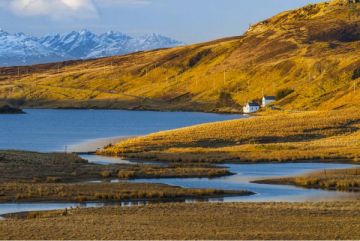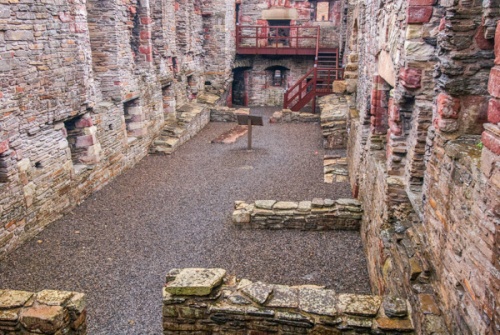
History
The Bishop's Palace was begun in the early 12th century, at the same time as the Cathedral of St Magnus almost opposite. We do not know which Bishop of Orkney founded the Palace but it may have been Bishop William 'the Old', who died in 1168. Bishop William was a close friend of Earl Rognvald, nephew of St Magnus, who was the patron of the new cathedral.
Bishop William was also an active Crusader; a reminder that medieval church leaders could also be very active political and military leaders. The Bishop's original residence was at Birsay, but it made sense for him to have a residence near the new cathedral in Kirkwall.
The core of the Palace is a two-storey hall house. The ground level of the hall is almost complete, but much of the first floor is gone. Look for the west windows, built of alternating bands of red and yellow stone, like the cathedral.
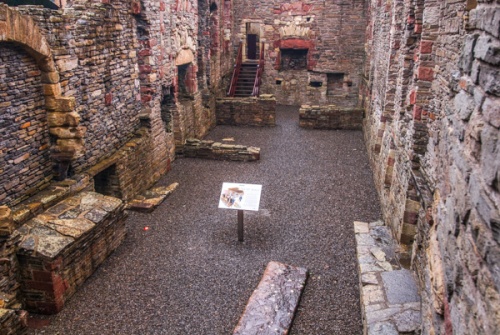
The Death of a King
The most important event in the history of the Bishop's Palace occurred in 1263 when King Hakon IV of Norway stopped at Kirkwall on his return from his failure at the Battle of Largs. The king contracted an illness while stopping over at Kirkwall on his way back to Norway.
On 23 December, 1263 Hakon died in his bedchamber at the Palace. His body was carried into the hall, where people gathered to pay their respects. It was a pivotal moment in the history of Scotland and the Orkneys, for Hakon was the last Norwegian monarch to rule the Hebrides, and from that day forth the islands fell gradually under the rule of Scottish kings far to the south.
Curiously, the Palace fell into disrepair during the 14th century, and by 1320 it was little more than a ruin. For 2 centuries the Palace mouldered away, forgotten by history. Then in 1540, King James V used the Palace as a garrison for his soldiers during a visit to Kirkwall.
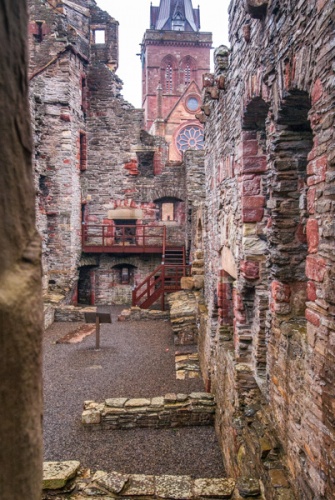
The Palace was rescued from decay by Bishop Robert Reid, better known as the founder of Edinburgh University, who restored the medieval buildings. Bishop Robert built 'Moosie Tor', a striking round tower at the north west corner of the Palace.
The site was briefly owned by Earl Patrick Stewart, who planned to include the medieval buildings in his opulent new residence, the Earl's Palace. However, debt forced Stewart to hand the Palace back to the current bishop.
Earl Patrick was later imprisoned for treason, and his son, Robert Stewart, launched a rebellion, seizing both the Bishop's Palace and the Earl's Palace. Royal troops besieged the rebel strongholds in Kirkwall, though it is not clear whether the siege included the Bishop's Palace.
The rebellion was quashed, and both father and son were executed. The Palace was left to crumble into decay, leaving only the Moosie Tor and the base of the hall.
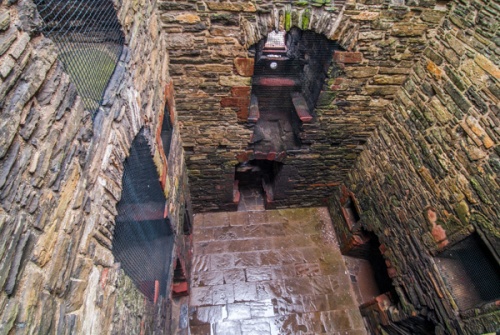
Visiting
The Bishop's Palace and the Earl's Palace across the road are administered as one by Historic Scotland. We had to get a key for the Bishop's Palace from the ticket kiosk at the Earl's Palace. Though obviously in a much more ruinous state than the Earl's Palace, this is a very impressive complex of buildings.
It can be hard to unravel the history of the site, due to the way it was extended and rebuilt over the medieval period. The Palace is not large, but it is worth remembering that what we see today is only a small part of the original medieval palace.
The most impressive part of the Palace is undoubtedly the hall, even though most of the upper floor has disappeared over the centuries. It is amazing took out the windows of the Palace and see not one, but two other wonderful historic sites; the Earl's Palace and the cathedral.
 We've 'tagged' this attraction information to help you find related historic attractions and learn more about major time periods mentioned.
We've 'tagged' this attraction information to help you find related historic attractions and learn more about major time periods mentioned.